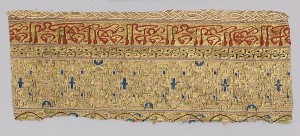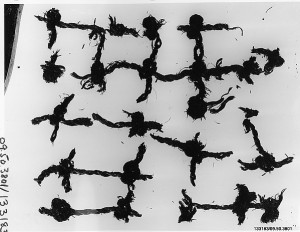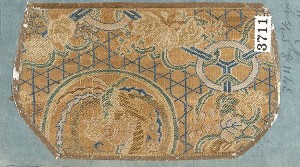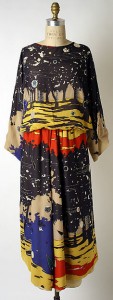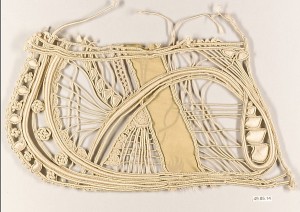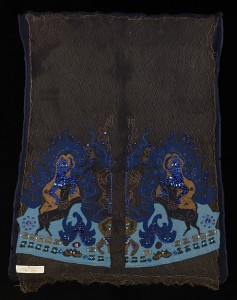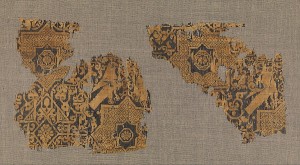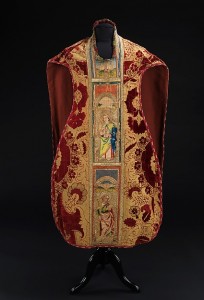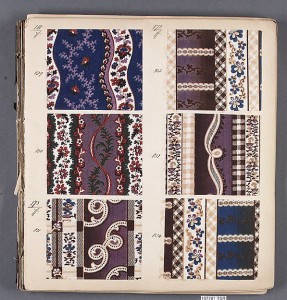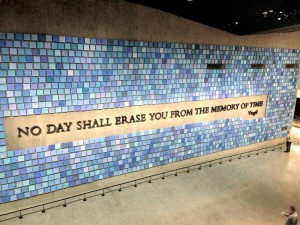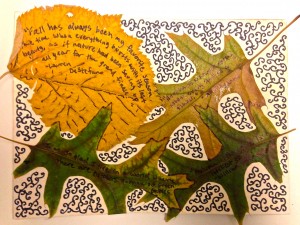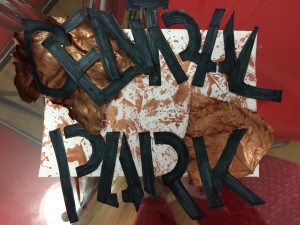Tag Archives: Integrative Studio Homework
Collective Memory Part 1
Kai and I have met with and spoken to the Director of Development of St. Patrick’s Cathedral. We have discussed how we will set up our book for people to write their reasons for worship at St. Patrick’s Cathedral stories in. We were also given a private tour of the cathedral and learned even more about its history. We were shown pictures of the cathedral from 1903 and 1940. We also saw drawings of what the church looked like back in the 1800’s when it was being built. The Director also showed us the back rooms of the church where the priest puts on his vestments. He showed us where all the past archbishops of New York are buried and told us some about the design of the church. He discussed how part of the church incorporate the Art Deco trend of Art Nouveau which was big at the time in the 1930’s, when that part of the church was built. He also discussed how the inside of the church is painted white to match the white stone on the outside. Apparently, this was very important to the architect. We learned about the Galeros, which are red hats of the cardinals, that hang from the ceiling. It is an old tradition that when a cardinal’s Galero falls to the ground, that means he has officially ascended into heaven. This tradition is not popular anymore, and the Galeros at the cathedral are hung with wire, so they will not fall down. We learned about the 3 organs they have, the giant brass doors that were carved with clay originally by hand, and the stained glass windows that were added in the 1940’s. We plan to have the book made over the weekend that way we can go down to the church and have people begin signing it.
Final Project Proposal
Project Proposal by Olivia and Kai
Project Proposal
For our Collective Memory final project, we have decided to focus on St. Patrick’s Cathedral. After researching the history of the Cathedral, we learned that it has been in New York since the 1800s and was restored multiple times, including currently. Many famous people, including Andy Warhol and Babe Ruth, had requiem masses held for them there. Looking at this information, we were inspired by the Cathedral’s history and its surrounding changes over time.
Upon further investigation, we found a video interview with an elderly woman who talked about her personal memory of St. Patrick’s Cathedral. She said for 40 days, every day she went to St. Patrick’s Cathedral to pray for the man she was in love with to ask her out on a date. After the 40 days, she attended a Christmas Party the man also showed up and ended up proposing to her. They have been happily married since. This personal story inspired us to settle on our final decision to collect prayer intentions of individuals who visit the Cathedral. Why are they there? What are they praying for? Has their prayer been answered? There are five and a half million people who visit the Cathedral from over the world each year. To collect some of their diverse encounters, memories, and intentions relating to the Cathedral in our book will be the ultimate goal. We will acquire bookbinding techniques to design the book, containing these testimonies.
We paid a visit to the Cathedral, made observations and have communicated our intention of leaving our prayer intentions book within the Cathedral. Having spoken to multiple people in the parish office, including one of the priests at the church, we are awaiting a response email from the Rector of the Cathedral. After we receive permission to put our book in the Cathedrals, we will proceed to the making of the book.
Brutal Breakup
A sentimental stop motion presented to you by Olivia Swinford, Kimaya Malwade, and Mei Kanamoto.
iMovie Practice Test 1
9/11 Memorial and Museum Response
Spending the morning at the 9/11 Memorial and Museum triggered many different emotions within me that I wasn’t expecting. Going in, I wasn’t sure what to expect from myself. I remember only being five years old when the tragedy occurred. I simply remember seeing the burning towers on the news, the frantic and shocked reactions of my parents and then being told that I wasn’t going to school that day. Growing up and learning about what happened, I could never imagine how it must have felt being in New York that horrible day. Now, having lived in the city a few months and going over the events again, where they actually occurred, I was overcome with an eerie feeling combined with sorrow and anger. Looking at the pictures of everyone that died that day and being able to read about who they were and what their families had to say about them, left me even more sorrowful. So many innocent people with futures and full of life were gone in a matter of a few hours. It was so personal and yet I still couldn’t imagine what they must have been feeling right before they died that day. Looking at the personal artifacts that belonged to these people, now in a museum, added to my uneasiness. That wallet must have traveled a million places with that person who died that day, and that telephone must have held many a personal conversation for the person had it. It made me ask so many questions. How did they loose it that day? If they had it with them, would they have been able to get out faster or tell someone they loved them before they died? Did they have it with them when they died? Did someone else have it with them? What was that person doing before they realized what was going on? It really made me stop and look at my everyday actions and think about how precious every moment really is. Continuing through the museum, looking at photos of the city that day and the people’s reactions transported me somehow briefly to them that day. Seeing places I recognized in those photos added to the weight of the reality of what happened. With this is mind, going through the timeline of what happened that day and seeing the pictures of the men who hijacked the planes made me sick. As I watched the airport surveillance video of them passing security, I become angrier. Looking into their eyes in those photos I asked myself over and over again what every person asks at some point: how can a person find it in themselves to do something so unimaginably horrible? Don’t they have a conscious? I will never be able to understand it.
I was not prompted to take pictures like I usually am when going to museums and like many other people were prompted to do. I was too upset and had too many questions. I only took a few photos of a piece of art that really spoke to me. It was a wall covered in tiles, each painted a different shade of blue in watercolors. The tiles surround the words “No day shall erase you from the memory of time,” by Virgil. The blue, watercolor tiles were painted by Spencer Finch. They are his attempt to try and remember what shade of blue the sky was on that day. Reading about this, the idea that everyone has their own distinct memory of that day, each one different, but each connecting back to that collective memory of what happened and how it has brought us together as a country for at least one day and one cause really stayed with me. The quote by Virgil is forged out of remaining steel from the World Trade Center by the artist Tom Joyce. Once again, the idea that these letters that form a quote that brings hope, which were created by steel becoming bendable by fire, the same way the towers were made collapsible, had an odd beautiful irony to it. It reinforced the idea that even in the darkest of times, we can find hope in one another and in the future. The idea that we can grow as individuals and a society from something as horrible as 9/11.
Walking back outside after going through the museum, I stood by the waterfalls that are now there in place of the twin towers. I looked around and couldn’t help but notice what a beautiful day it was outside and how peaceful the trees looked surrounding the waterfalls. Once again, I was struck by the eerie feeling that I was standing in the same spot where thousands of people ran for their lives, courageous men and women helped save the people around them and where many beautiful and innocent people died that day back in 2001.
Unpleasant Memories
My grandfather was a very special man, full of love and strength. He was always on time and only wanted the best for me and my sisters. He was very humble but very proud of his children and grandchildren. I remember spending weekends at my grandparents’ house. My grandfather would take me into the garden to water the flowers with him and my sister and I would walk with him to get the mail. He was always stashed with Starbursts candy to give to me and sisters when we came over. I can even remember the smell of his car and what the seats felt like. He had a heart warming smile that I can picture clearly now.
It was very sudden when he went into the hospital. I was in 5th grade and 10 years old at the time. I remember it was evening and my father told me that he was going to take my little sister and I over to visit him in the hospital. I loved making cards for people so I decided to make a Get Well card for him that was decorated with pictures of flowers. On our way to the hospital, my father got another call telling him that my grandfather had passed. I didn’t understand. I had never experienced someone I knew die before. It didn’t feel real. We continued into the hospital and up to the room where he was still lying in the bed with his eyes closed and my grandmother was crying. Looking down at the card that I never got to give him, I remember breaking down into tears. I couldn’t stop them as much as I tried to and every time I looked at him and then back at my card a new wave of emotion hit me. He looked like he was sleeping and I was just waiting for him to wake up, but I knew that he wasn’t going to.
The nurses told my parents that it was one of the most peaceful passings that they had ever witnessed. They said that he died of kidney failure, but that he simply closed his eyes and went. From that point on, life changed for me. I no longer had the four grandparents I was used to having and my weekends at their house no longer existed. My grandmother moved into our house to live with us since she was unfit to live alone and we did not want to put her into a home. I remember hearing her cry in the room we converted from my dad’s office into her bedroom. There were times when she would try to keep it to herself but I knew that she missed him so much. I miss him too and I still wish we had gotten there sooner so I could have given him my Get Well card.
Stop Motion
After viewing the stop motion devices at the MOMI and realizing the vast amount of movies that have been created using stop motion, I think there are several different ways to use stop motion for my class assignment. I think creating a flip book effect with sketches and drawings would allow me to be more abstract in my representation of the story. I think it would also be challenging and interesting to try and create miniature scenes using dioramas and dolls to realistically tell the story on a smaller scale. I would definitely find some inspiration from Mark Hogencamp if I were to go that route. I could also be interesting to try and create my own claymation. I could even create a “movie” through photographs I have taken and the stop motion would be in how long the moment of rest between the photos is. I think stop motion gives a new, organic element to story telling that can’t be found in movies or just photos. Stop motion gives you the option of telling a specific story through images but also having the advantage of that moment of rest between the frames that can allow for more change in between the frames and it adds a more playful feel to the whole story.
MoMI Response
Spending time at the Museum of the Moving Image was spectacular. I have always been fascinated by movies and animation. Seeing the sketches by Chuck Jones and how they translated from those sketches into the cartoons made me even more intrigued with the process of animated movies and shows. Seeing the Zoetrope really resonated with me and made me excited on what and how I can make my own stop image. Hoping to go into Fashion Design, costume design as always been something about movies that has always interested me and something I have considered going into more. Seeing the costumes on the second floor from movies like Chicago and Mrs. Doubtfire really inspired me and it intrigued me to look at the costume sketches next to the actual pieces because that is something that I have always wondered about: how exact are the costume sketches to the finished product.
Partnered Posts
Date in Central Park by Olivia Swinford and Natalia Quintero
For the partnered project, Natalia and I went on a walk and picnic in Central Park. One of the main themes discussed in our conversation was autumn and how it is our favorite season, as well as how we are unprepared for the changing of seasons since we are both from the Southwest. In addition to this we talked about our plans for Thanksgiving and Christmas vacation. I wanted to incorporate this theme into my postcard so I used some pretty leaves I had taken as a momento from the park for the postcard. I also did a light wash of tan watercolor on the postcard to give it more of an autumn feel. I then decided to gather some quotes on Autumn and how beautiful it is.
Postcard by Olivia Swinford
Postcard by Natalia Quintero
